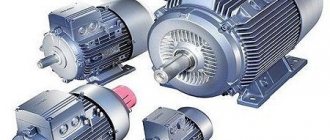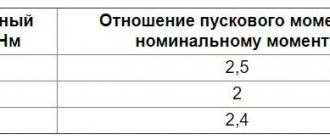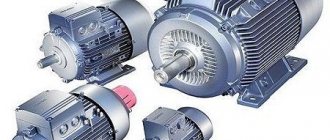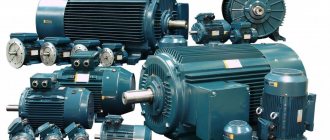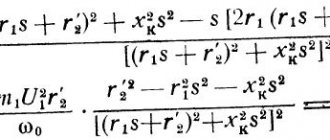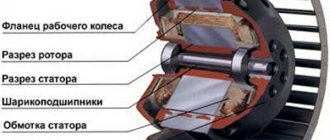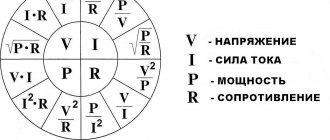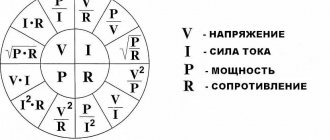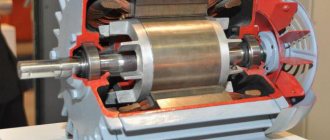Added July 28, 2022 at 2:30 pm
Save or share
Learn about torque, how it applies to engines, and why torque values are so important to your projects.
In basic physics, you're probably used to thinking about linear forces, like the force of gravity pulling things down, or the force you apply to a shopping cart when you push it. Torque is similar to linear forces, but while linear forces cause an object to move in a straight line, torque causes objects to rotate.
If you've ever opened a door, you should have an intuitive understanding of torque. When you open a door, you apply force on the side of the door that is furthest from the hinges. Because the door is solid, your force acting at a distance from the door's center of rotation (the hinge) causes the door to rotate and open. You can open the door by pressing on the side of the door closest to the hinges, but as you know, it will take a lot more force to open the door this way. This is because by reducing the distance between you and the door's center of rotation, you create less torque.
Torque is calculated by multiplying the linear force by the distance that force acts from the center of rotation. A classic example of torque is a wrench when unscrewing a nut. If you have a 20 cm long wrench and you press the wrench with a force of 2 kg, the torque on the nut will be (20 cm x 2 kg =) 40 kg cm.
Figure 1 – A classic example of torque can be seen when you use a wrench to tighten a nut.
When we look at engines, the calculation of torque is similar - force times distance.
The only difference is that unlike a wrench where the force is applied to the lever, with a motor the torque is applied directly at the center of rotation, creating a linear force at the end of the lever. When thinking about motor torque, you can imagine a motor using an arm to lift a weight. The maximum weight the engine can lift will correspond to the maximum torque.
Figure 2 - In engines, torque is applied at the center of rotation to create a linear force.
Motors designed to provide more torque are able to exert more force on other objects.
Work and power
Now let’s dwell on the concept of “work,” which in this context has a special meaning. Work is done whenever a force—any force—causes motion. Work equals force times distance. For linear motion, power is expressed as work done at a certain point in time.
If we're talking about rotation, power is expressed as torque (T) multiplied by speed (w).
The rotational speed of an object is determined by measuring the time it takes for a certain point on a rotating object to complete a full rotation. Typically this value is expressed in revolutions per minute, i.e. min-1 or rpm. For example, if an object makes 10 complete revolutions per minute, that means its rotation speed is: 10 min-1 or 10 rpm.
So, rotation speed is measured in revolutions per minute, i.e. min-1.
Let's bring the units of measurement to a general form.
For clarity, let's take different electric motors to analyze in more detail the relationship between power, torque and speed. Although the torque and speed of electric motors vary greatly, they can have the same power.
For example, let's say we have a 2-pole motor (3000 rpm) and a 4-pole motor (1500 rpm). The power of both electric motors is 3.0 kW, but their torques are different.
Thus, the torque of a 4-pole electric motor is twice the torque of a two-pole electric motor with the same power.
How are torque and speed generated?
Now that we've covered the basics of torque and speed, we need to look at how they are created.
In AC motors, torque and speed are created by the interaction between the rotor and the rotating magnetic field. The magnetic field around the rotor windings will tend to the magnetic field of the stator. In real operating conditions, the rotor speed always lags behind the magnetic field. Thus, the magnetic field of the rotor crosses the magnetic field of the stator and lags behind it and creates a torque. The difference in the rotational speed of the rotor and stator, which is measured in %, is called the sliding speed.
Slip is the main parameter of an electric motor, characterizing its operating mode and load. The greater the load the electric motor must handle, the greater the slip.
Keeping in mind what was said above, let’s look at a few more formulas. The torque of an induction motor depends on the strength of the magnetic fields of the rotor and stator, as well as on the phase relationship between these fields. This relationship is shown in the following formula:
The strength of the magnetic field primarily depends on the design of the stator and the materials from which the stator is made. However, voltage and frequency also play an important role. The torque ratio is proportional to the square of the stress ratio, i.e. if the supplied voltage drops by 2%, the torque therefore decreases by 4%.
Measure the engine torque yourself
We've looked at why staying within the engine's maximum torque is so important. So what should you do if you think your engine is not up to standard? Do not be afraid! We have a project that can show you how to measure the torque of a servo motor (in the next article).
Double check the torque of your servo motor before adding it to your project. This will help you take the frustration out of building and redoing things over and over again.
Original article:
- Scott Hatfield. What is Torque and Why Does it Matter?
Electric motor power consumption
The rotor current is induced through the power supply to which the electric motor is connected, and the magnetic field is partially created by the voltage. The input power can be calculated if we know the motor power supply data, i.e. voltage, power factor, current consumption and efficiency.
In Europe, shaft power is usually measured in kilowatts. In the US, shaft horsepower is measured in horsepower (hp).
If you need to convert horsepower to kilowatts, simply multiply the corresponding value (in horsepower) by 0.746. For example, 20 hp. equals (20 • 0.746) = 14.92 kW.
Conversely, kilowatts can be converted to horsepower by multiplying the kilowatt value by 1.341. This means that 15 kW equals 20.11 hp.
Calculation of the starting torque of a single-phase motor with the winding on and off
The PM for the rotor of a single-phase motor corresponds to zero, because one winding creates two magnetic fields of equal amplitude only opposite in direction, and the sum of their vectors will be equal to 0. The starting torque of a single-phase motor is the torque that develops on the shaft of the motor when the rotor is static, and The current stator is fixed to the windings. The key elements of each asynchronous machine can rightfully be considered a rotor (rotating element) and a stator (fixed part). The stator provides a magnetic field to rotate the rotor. The PM of a single-phase AEM without a starting winding corresponds to 1/2 of the maximum torque.
Motor torque
Power [kW or hp] relates torque to speed to determine the total amount of work that must be done in a given period of time.
Let's look at the interaction between torque, power and speed, and their relationship with electrical voltage, using Grundfos electric motors as an example. Electric motors have the same power rating at both 50 Hz and 60 Hz.
This entails a sharp reduction in torque at 60 Hz: 60 Hz causes a 20% increase in speed, which leads to a 20% decrease in torque. Most manufacturers prefer to specify motor power at 60 Hz, so as line frequency drops to 50 Hz, motors will produce less shaft power and torque. Electric motors provide the same power at 50 and 60 Hz.
A graphical representation of the torque of the electric motor is shown in the figure.
The illustration represents a typical torque/speed characteristic. The following are terms used to describe the torque of an AC motor.
Starting torque (MP): Mechanical torque developed by the electric motor on the shaft during start-up, i.e. when current is passed through an electric motor at full voltage while the shaft is locked.
Minimum Starting Torque (Mmin): This term is used to refer to the lowest point on the torque/speed curve of an electric motor as the load is increased to full speed. For most Grundfos electric motors, the minimum starting torque is not specified separately, since the lowest point is at the locked rotor point. As a result, for most Grundfos motors the minimum starting torque is the same as the starting torque.
Blocking torque (Mblock): The maximum torque is the torque produced by an AC motor at rated voltage, supplied at rated frequency, without sudden changes in rotational speed. It is called the ultimate overload torque or maximum torque.
Full Load Torque (FLT): The torque required to produce rated power at full load.
Increasing starting torque
The starting torque can be increased due to the frequency converter. If you change the resistance value of the starting rheostat, you will be able to achieve a higher starting torque. But what happens if you reduce the starting torque voltage by half? He will fall sharply. The change in the primary current is determined by the load of the electric motor. With a heavy load on an asynchronous motor, a decrease in the voltage at its terminals leads to an overload of the motor windings with currents with all the ensuing consequences. On the contrary, the starting torque of an asynchronous motor increases when a rheostat is introduced into the wound rotor. There are rules in accordance with which an asynchronous electric motor must be started. Which starting method increases the starting torque of an asynchronous motor? Connecting the rotor to the rheostat during switching on is suitable for switching on motors with different rotors. If a rheostat is included in the circuit, the resistance level increases. This provides an increase in starting torque. Asynchronous motors with increased starting torque are designed specifically for driving mechanisms characterized by high loads at the time of start-up. But motors with an increased slip rate are used for equipment that has uneven shock load characteristics and a high frequency of starts and reverses. How to increase starting torque? It is necessary to use an AED with a high PM. Its further increase can be made if you use motors with a rotor winding of the double “squirrel cage” type; the groove must be deep. Such an AED will have a pair of short-circuited windings on the rotor. One of them is starting, and the other is working. To increase the PM, the starting winding must have greater active resistance than the working one.
Pump Load and Motor Load Types
The following types of loads are distinguished:
Constant power
The term "constant power" is used for certain types of loads that require less torque as the rotation speed increases, and vice versa. Constant power loads are typically used in metalworking applications such as drilling, rolling, etc.
Constant torque
As the name implies - “constant torque” - it is implied that the amount of torque required to operate a mechanism is constant, regardless of the speed of rotation. An example of such an operating mode is conveyors.
Variable torque and power
“Variable torque” is the category that is of greatest interest to us. This torque is relevant for loads that require low torque at low speed and require higher torque as the speed increases. A typical example is centrifugal pumps.
The rest of this section will focus solely on variable torque and power.
Having determined that variable torque is typical for centrifugal pumps, we must analyze and evaluate some of the characteristics of a centrifugal pump. The use of variable speed drives is subject to special laws of physics. In this case, these are similarity laws , which describe the relationship between pressure differences and flow rates.
Firstly, the pump flow is directly proportional to the rotation speed. This means that if the pump runs at 25% higher speed, the flow will increase by 25%.
Secondly, the pump pressure will change in proportion to the square of the change in rotation speed. If the rotation speed increases by 25%, the pressure increases by 56%.
Thirdly, what is especially interesting is that power is proportional to the cube of the change in rotation speed. This means that if the required speed is reduced by 50%, this equates to an 87.5% reduction in power consumption.
In summary, the laws of similarity explain why the use of variable speed drives is more appropriate in applications where variable flow and pressure are required. Grundfos offers a range of electric motors with an integrated frequency converter that regulates the speed to achieve exactly this purpose.
Just like feed, pressure and power, the amount of torque required depends on the rotation speed.
The figure shows a cross-section of a centrifugal pump. The torque requirements for this type of load are almost the opposite of those required for "constant power". For variable torque loads, the torque requirement at low speed is low and the torque requirement at high speed is high. In mathematical terms, torque is proportional to the square of the rotation speed, and power is proportional to the cube of the rotation speed.
This can be illustrated using the torque/speed characteristic we used earlier when talking about motor torque:
As the motor accelerates from zero to rated speed, the torque can vary significantly. The amount of torque required at a given load also varies with speed. In order for an electric motor to be suitable for a particular load, it is necessary that the torque of the electric motor always exceeds the torque required for a given load.
In the example, the centrifugal pump at rated load has a torque of 70 Nm, which corresponds to 22 kW at a rated speed of 3000 rpm. In this case, the pump requires 20% torque at rated load when starting, i.e. approximately 14 Nm. After starting, the torque drops slightly and then increases to full load as the pump picks up speed.
Obviously, we need a pump that will provide the required flow/pressure (Q/H) values. This means that the electric motor must not be allowed to stop, in addition, the electric motor must constantly accelerate until it reaches its rated speed. Therefore, it is necessary that the torque characteristic matches or exceeds the load characteristic over the entire range from 0% to 100% rotation speed. Any “excess” moment, i.e. The difference between the load curve and the motor curve is used as the rotation acceleration.
Which engine to choose?
Today, manufacturers equip many models with different types of engines: gasoline or diesel. These models are identical only in price and other characteristics.
Due to different types of motor, the same model may differ in motor power and torque, and the difference can be significant.
Gas engine
A gasoline engine creates an air-fuel mixture that fills the cylinder. The temperature inside it rises to about 500 degrees. For such engines, the nominal compression ratio is about 9-10, less often 11 units. Therefore, when injection occurs, it is necessary to use spark plugs.
Diesel engine
In the cylinders of a diesel engine, the compression ratio of the mixture can reach 25 units, the temperature can reach 900 degrees. Therefore, the mixture is lit without the use of a candle.
Electric motor
An automobile three-phase asynchronous electric motor operates according to completely different laws, so its power and CM differ radically from traditional ones. The electric motor consists of a rotor and a stator, the multiplicity of which allows it to produce a peak power output (600 Nm) at any speed. At the same time, the power of the electric motor, for example, in Tesla, is 416 hp. With.
To answer the question - is a diesel, gasoline or electric motor better, we must first exclude the third option, since electric motors are not yet as common as the first two types.
IMPORTANT! When it comes to choosing between petrol and diesel engines, they primarily differ in power and torque. In practice, this means that with the same engine size, a diesel engine accelerates faster, while a gasoline engine allows for higher speeds.
In addition, due to the greater torque, a vehicle used as a truck has a greater load capacity due to the engine. Especially if the engine is a diesel generator.
Matching the electric motor to the load
If you need to determine whether the torque of a particular motor meets the load requirements, you can compare the speed/torque characteristics of the motor with the speed/torque characteristics of the load. The torque produced by the motor must exceed the torque required by the load, including periods of acceleration and full speed.
Characteristics of the dependence of torque on the rotation speed of a standard electric motor and centrifugal pump.
If we look at the characteristic, we will see that when the electric motor accelerates, it starts at a current corresponding to 550% of the full load current.
As the motor approaches its rated speed, the current decreases. As would be expected, during the initial start-up period losses on the motor are high, so this period should not be long to prevent overheating.
It is very important that the maximum rotation speed is achieved as accurately as possible. This is related to power consumption: for example, a 1% increase in rotation speed over the standard maximum results in a 3% increase in power consumption.
Power consumption is proportional to the diameter of the pump impeller to the fourth power.
Reducing the diameter of the pump impeller by 10% leads to a decrease in power consumption by (1- (0.9 * 0.9 * 0.9 * 0.9)) * 100 = 34%, which is equal to 66% of the rated power. This dependence is determined solely in practice, as it depends on the type of pump, the design of the impeller and how much you reduce the diameter of the impeller.
Why is torque important?
Torque, especially when designing systems with motors that provide the correct amount of torque, is incredibly important in a wide range of different applications.
Let's say you're building a robot. If you want to build a larger robot or a robot that can lift heavier objects, you will need more powerful motors that can produce more torque to make the robot move.
For aircraft, the torque produced by the engines directly determines the maximum lift the propellers can produce.
Figure 3 – Creation of lift by torque.
If you're building a car and want it to accelerate faster, you'll need more torque from the engines—in a car, the force moving it forward is equal to (roughly) the torque of the engine divided by the radius of the wheels.
Electric cars like the Tesla Model S are known for their fast acceleration because their electric motors generate enormous amounts of torque. This torque is directly transferred into a greater force applied by the wheels to the road surface. As basic physics teaches, applying more force to an object will cause it to accelerate faster.
Motor start time
If we need to size an electric motor for a specific load, for example for centrifugal pumps, our main task is to provide the appropriate torque and power at the rated operating point, because the starting torque for centrifugal pumps is quite low. The starting time is quite limited, since the torque is quite high.
It is not uncommon for complex motor protection and control systems to take some time to start up before they can measure the motor's starting current. The starting time of the electric motor and pump is calculated using the following formula:
tstart = time required for the pump motor to reach full load speed
n = motor speed at full load
Itotal = inertia, which requires acceleration, i.e. inertia of the electric motor shaft, rotor, pump shaft and impellers.
The moment of inertia for pumps and motors can be found in the relevant technical data.
Misb = excess torque accelerating rotation. The excess torque is equal to the motor torque minus the pump torque at various speeds.
Mizb can be calculated using the following formulas:
As can be seen from the above calculations performed for this example with a 4 kW electric motor of a CR pump, the start time is 0.11 seconds.
Calculation of starting torque
It is determined by a certain formula. The magnitude of the multiplicity can vary from 1.5 to 6. It is important to follow the rule according to which the static torque should always be less than the starting torque. Without this, it is impossible to achieve correct operation of the motor. To understand how the PM multiplicity of an asynchronous device is determined, you need to understand the very mechanism of operation of the device. Directly when starting, the electric motor will consume starting current, its indicator is significantly higher than that of the working one. It is the value that denotes the difference between the indicated currents that is designated as a multiplicity; it is usually taken into account as a coefficient. But rated and operating currents are different designations that should not be confused. The current multiplicity is determined by the motor power. If the power is low, then the starting current is high. How to determine the starting torque of an electric motor and how to determine the starting torque of an asynchronous motor? There is a formula for calculating the starting torque of an AED. You can use the electrical measurement method or use special tables.
Number of motor starts per hour
Today's sophisticated motor control systems can control the number of starts per hour for each specific pump and motor. The need to control this parameter is that every time the electric motor is started and then accelerated, a high starting current consumption is noted. The starting current heats the electric motor. If the motor does not cool down, the continuous load from the inrush current will significantly heat the motor stator windings, resulting in motor failure or shortened insulation life.
Typically, the number of starts a motor can make per hour is the responsibility of the motor supplier. For example, Grundfos specifies the maximum number of starts per hour in the technical data for the pump, since the maximum number of starts depends on the moment of inertia of the pump.
What is the maximum torque and how can it be increased?
Engine power is its most important indicator. Both in terms of operation and in terms of calculating taxes on cars. Torque is often confused with power or overlooked when evaluating a car's performance. Many people simplify the car, believing that a large amount of horsepower is the main advantage of any engine. However, torque is a more important indicator. Especially if the car is not intended to be used as a sports car.

